GCSE maths tutoring programmes
Help students achieve their target grade with AI tutor Skye, the GCSE maths tutor built by maths teachers
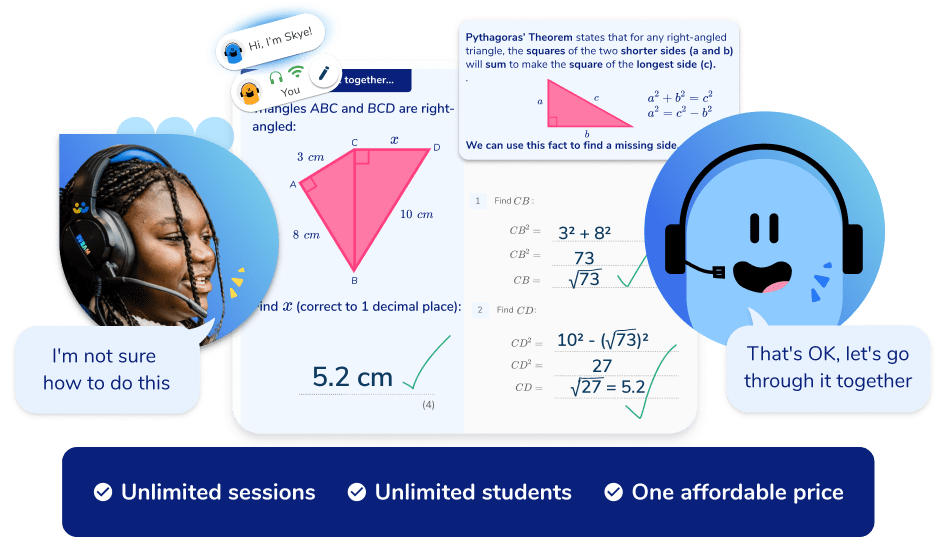
Personalised online one-to-one GCSE maths tutoring
Voice-based AI tutoring for GCSE maths students
Unlimited tutoring for just £5,000 per school per year
5 programmes for GCSE maths grades 3-7
Revision lessons built around GCSE maths exam questions
Flexible scheduled online tutoring plus on-demand practice
“Our students are engaged and excited with their Skye sessions, and the tutoring experience has been smooth. I was completely impressed by what I saw in the session. Our students and teachers are excited about this partnership and eager to see the progress that this programme will bring.”
Sara Oliver
Principal
How the AI GCSE maths tuition works
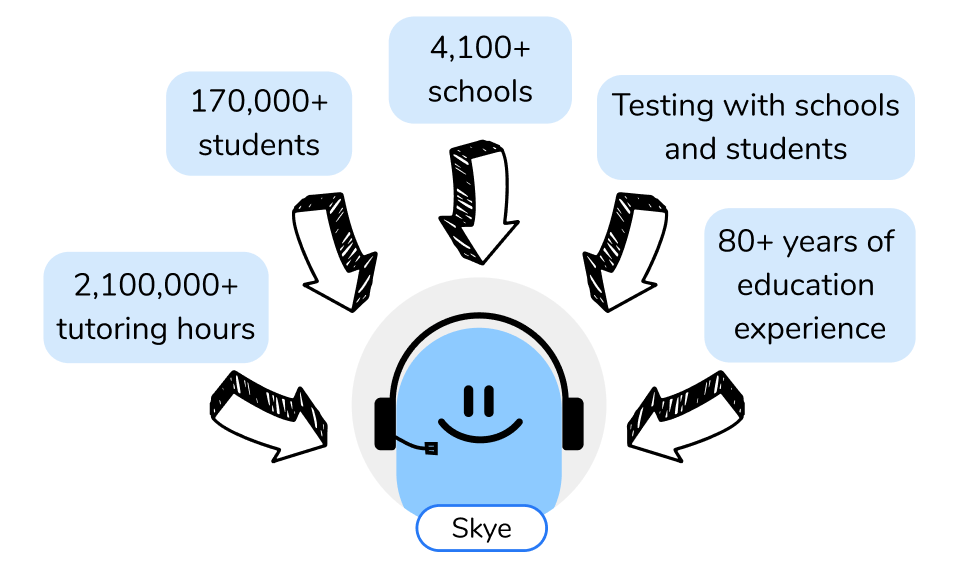
Drawing on insights from over a decade of school-based tutoring and almost 2 years of AI maths tutor testing with schools, we’ve built Skye to teach GCSE maths just like a trained professional tutor or subject specialist, but for a fraction of the cost.
Unlike generic text-only chatbots, Skye holds spoken two-way conversations. Students talk through GCSE maths exam questions out loud while Skye listens, prompts and explains.
How it works in schools like yoursFlexible GCSE maths tutoring programmes
A range of AI maths tutoring programmes to meet your students’ needs:
Programmes to help meet each student’s target GCSE maths grade
Created using insights from past GCSE maths exam papers
Scaffolded lessons built around GCSE maths exam-style questions
Reorder GCSE maths topics at any point for:
Pre-teaching
Aligning with current class teaching
Revisiting concepts
Prioritising individual gaps
Targeting GCSE Grade 3
View lessons
Targeting GCSE Grade 3
Learning objectives in this programme
Each Learning Objective covers a series of GCSE-style questions, progressively building fluency, accuracy, and confidence.
Identifying Types of Number
Understanding Fractions
Working with Powers, Squares, Cubes and Roots
Calculating with Negative Numbers
Identifying Coordinates and Midpoints
Working with Sequences
Identifying Properties of 2D and 3D shapes
Performing Transformations of Shapes
Simplifying and Collecting Like Terms
Drawing and Interpreting Charts and Tables
Converting between Measures
Calculating Averages and Range
Working with Probabilities
Calculating with Fractions
Rounding Values
Finding the HCF and LCM using listing methods
Calculating Percentages
Finding Area and Circumference of Circles
Working with Substitution
Solving Linear Equations
Calculating with Fractions in Context
Working with Fractions, Decimals and Percentages
Drawing a Linear Graph from a Table of Values
Drawing and Interpreting Scatter Graphs
Expanding and Factorising Single Brackets
About this programme
25 high impact topics, each carefully crafted to cover key concepts and skills essential for achieving a Grade 3 in maths. These targeted exercises not only strengthen foundational knowledge but also familiarise students with the format and challenge level of the GCSE, ensuring they feel well-prepared and self-assured for the exam.
How are lessons ordered?
The default order has been set by our academic team for the most appropriate sequence of learning as students develop skills. Teachers can re-order lessons at any point.
Targeting GCSE Grade 4
View lessons
Targeting GCSE Grade 4
Learning objectives in this programme
Each Learning Objective covers a series of GCSE-style questions, progressively building fluency, accuracy, and confidence.
Simplifying and Collecting Like Terms
Drawing and Interpreting Charts and Tables
Converting between Measures
Calculating Averages and Range
Working with Probabilities
Calculating with Fractions
Rounding Values
Finding the HCF and LCM using listing methods
Calculating Percentages
Finding Area and Circumference of Circles
Working with Substitution
Solving Linear Equations
Calculating with Fractions in Context
Working with Fractions, Decimals and Percentages
Drawing a Linear Graph from a Table of Values
Drawing and Interpreting Scatter Graphs
Expanding and Factorising Single Brackets
Using Pythagoras’ Theorem
Using Index Laws
Finding Angles in Parallel Lines
Working with Inequalities
Working with Prime Factorisation
Working with Arithmetic Sequences
Calculating Probability
Solving Area and Perimeter Problems
Calculating Volume
Calculating Surface Area
Working with Ratio
Expanding Double Brackets
Calculating Averages from Tables
Calculating with Compound Measures
Estimating
Factorising Quadratics
About this programme
33 high impact topics, each carefully crafted to cover key concepts and skills essential for achieving a Grade 4 in maths. These targeted exercises not only strengthen foundational knowledge but also familiarise students with the format and challenge level of the GCSE, ensuring they feel well-prepared and self-assured for the exam.
How are lessons ordered?
The default order has been set by our academic team for the most appropriate sequence of learning as students develop skills. Teachers can re-order lessons at any point.
Targeting GCSE Grade 5
View lessons
Targeting GCSE Grade 5
Learning objectives in this programme
Each Learning Objective covers a series of GCSE-style questions, progressively building fluency, accuracy, and confidence.
Drawing and Interpreting Scatter Graphs
Expanding and Factorising Single Brackets
Pythagoras’ Theorem
Index Laws
Angles in Parallel Lines
Working with Inequalities
Prime Factorisation
Arithmetic Sequences
Calculating Probability
Solving Area and Perimeter Problems
Calculating Volume
Calculating Surface Area
Working with Ratio
Expanding Double Brackets
Calculating Averages from Tables
Compound Measures
Estimating
Factorising Quadratics (coefficient equal to 1)
Working with Standard Form
Working with y = mx + c
Applying Pythagoras’ Theorem
Trigonometry: Using SOHCAHTOA
Forming and Solving Linear Equations
Solving Linear Simultaneous Equations
Calculating Compound Interest and Depreciation
Finding Angles in Polygons
Calculating with Reverse Percentages
Finding Probabilities using Tree Diagrams
Venn Diagrams
Drawing a Non-Linear Graph from a Table of Values
Calculating Average Speed and Density.
Angles in Parallel Lines
About this programme
32 high impact topics, each carefully crafted to cover key concepts and skills essential for achieving a Grade 5 in maths. These targeted exercises not only strengthen foundational knowledge but also familiarise students with the format and challenge level of the GCSE, ensuring they feel well-prepared and self-assured for the exam.
How are lessons ordered?
The default order has been set by our academic team for the most appropriate sequence of learning as students develop skills. Teachers can re-order lessons at any point.
Targeting GCSE Grade 6
View lessons
Targeting GCSE Grade 6
Learning objectives in this programme
Each Learning Objective covers a series of GCSE-style questions, progressively building fluency, accuracy, and confidence.
Calculating Averages from Tables
Compound Measures
Estimating
Factorising Quadratics (Coefficient Equal to 1)
Working with y = mx + c
Applying Pythagoras’ Theorem
Trigonometry: Using SOHCAHTOA
Forming and Solving Linear Equations
Solving Linear Simultaneous Equations
Calculating Compound Interest and Depreciation
Finding Angles in Polygons
Calculating with Reverse Percentages
Finding Probabilities Using Tree Diagrams
Venn Diagrams
Drawing a Non-Linear Graph from a Table of Values
Calculating Average Speed and Density
Combining and Subdividing Ratios
Factorising Quadratics (coefficient not equal to 1)
Identifying Parallel and Perpendicular Lines
Finding Arc Lengths and Area of Sectors
Finding the Nth Term of a Quadratic Sequence
Converting Recurring Decimals to Fractions
Using the Product Rule for Counting
Expanding Triple Brackets
Working with Similar Shapes
Using Cumulative Frequency and Box Plots
Using Negative and Fractional Indices
Rearranging Formulae
Using Direct and Inverse Proportion
Applying the Capture-Recapture Method
About this programme
30 high impact topics, each carefully crafted to cover key concepts and skills essential for achieving a Grade 6 in maths. These targeted exercises not only strengthen foundational knowledge but also familiarise students with the format and challenge level of the GCSE, ensuring they feel well-prepared and self-assured for the exam.
How are lessons ordered?
The default order has been set by our academic team for the most appropriate sequence of learning as students develop skills. Teachers can re-order lessons at any point.
Targeting GCSE Grade 7
View lessons
Targeting GCSE Grade 7
Learning objectives in this programme
Each Learning Objective covers a series of GCSE-style questions, progressively building fluency, accuracy, and confidence.
Calculating Average Speed and Density
Combining and Subdividing Ratios
Factorising Quadratics (Coefficient Not Equal to 1)
Identifying Parallel and Perpendicular Lines
Finding Arc Lengths and Area of Sectors
Finding the nth term of a Quadratic Sequence
Converting Recurring Decimals to Fractions
Using the Product Rule for Counting
Expanding Triple Brackets
Working with Similar Shapes
Using Cumulative Frequency and Box Plots
Using Negative and Fractional Indices
Rearranging Formulae
Using Direct and Inverse Proportion
Applying the Capture-Recapture Method
Simplifying Algebraic Fractions
Completing the Square
Using Circle Theorems
Simplifying Surds
Working with Spheres and Cones
Drawing and Reading from Histograms
Working with Vector Geometry
Using Function Notation
Working with Upper and Lower Bounds
Applying Transformations of Functions
About this programme
25 high impact topics, each carefully crafted to cover key concepts and skills essential for achieving a Grade 7 in maths. These targeted exercises not only strengthen foundational knowledge but also familiarise students with the format and challenge level of the GCSE, ensuring they feel well-prepared and self-assured for the exam.
How are lessons ordered?
The default order has been set by our academic team for the most appropriate sequence of learning as students develop skills. Teachers can re-order lessons at any point.
Watch a GCSE maths tutoring session in action
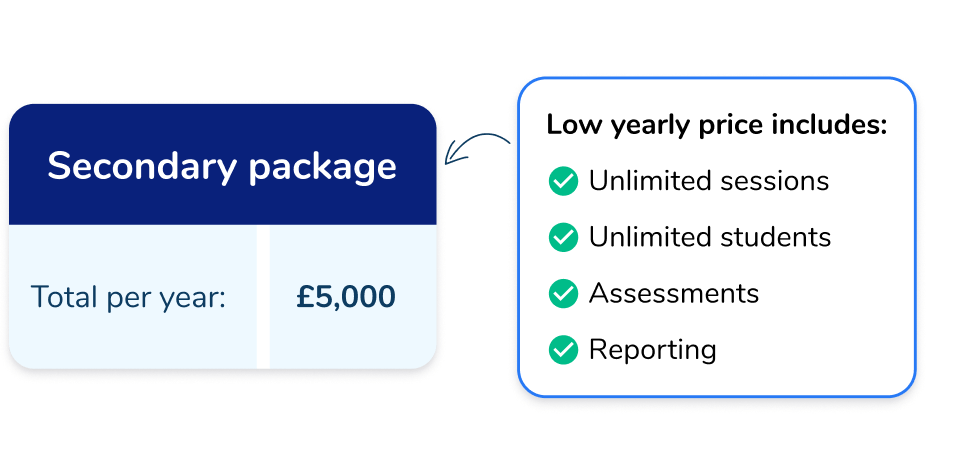
Low-cost one-to-one support for every GCSE student who needs it
With Skye, you can run as many one-to-one maths sessions as you need for one low fixed cost.
If more GCSE maths students need support during the year, you won’t have to find extra budget or remove other students from the programme.
The average secondary school will save 90% vs other maths GCSE tutors.
Structured, scaffolded GCSE maths lessons
Every teacher-designed GCSE maths tutoring lesson is broken down into sets of exam-style questions that scaffold learning before moving on to independent practice.
AI tutor Skye has been specifically trained on each lesson in the curriculum, teaching maths to meet individual learning needs, address misconceptions, boost knowledge, build confidence and help secure the mathematical concepts needed to meet their target GCSE maths grade in their exams.
Every GCSE maths lesson starts with a short diagnostic assessment. Skye will skip straight to independent practice if the pupil is ready or guide the pupil through the lesson as normal if not, using formative assessment to identify misconceptions and provide tailored hints.
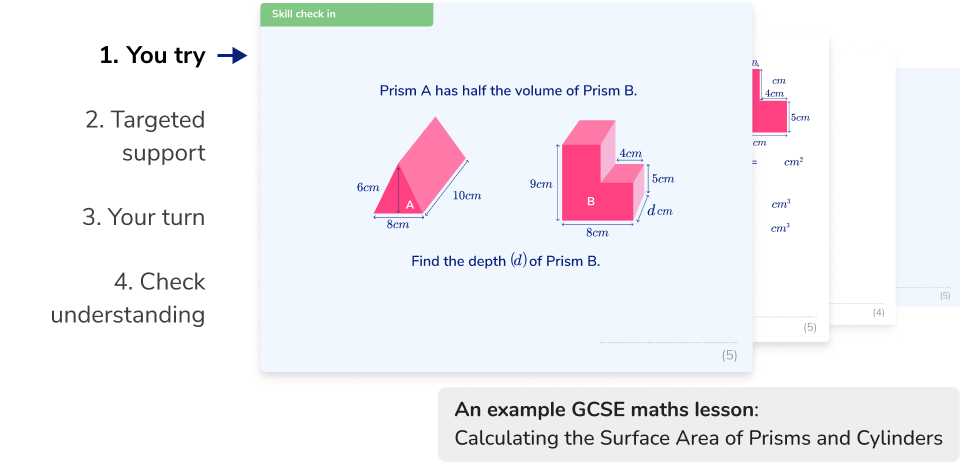
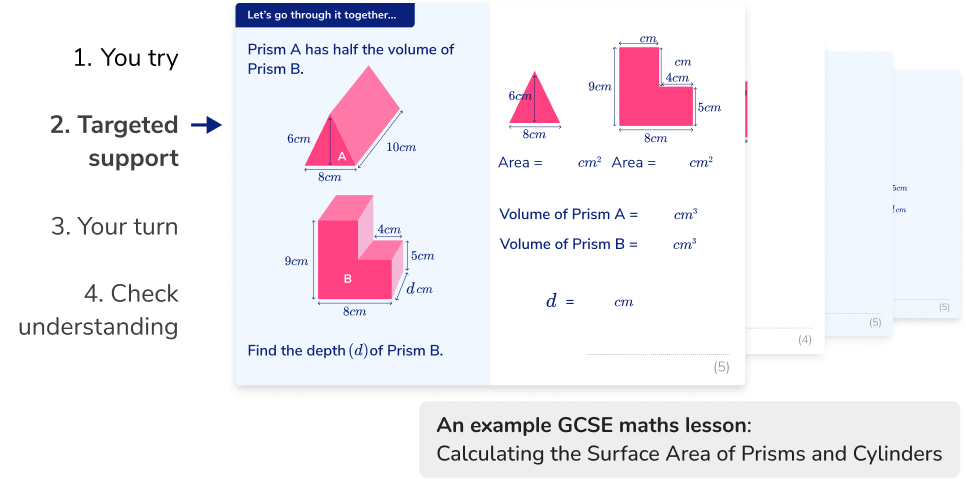
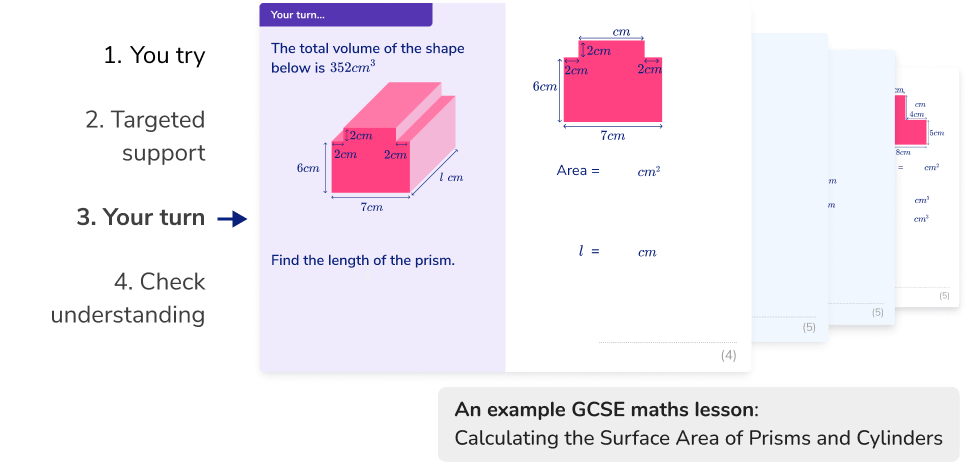
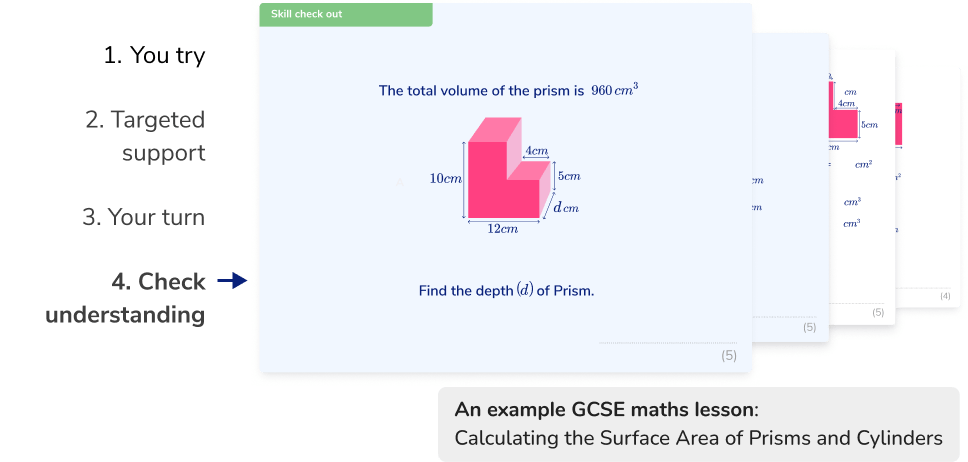
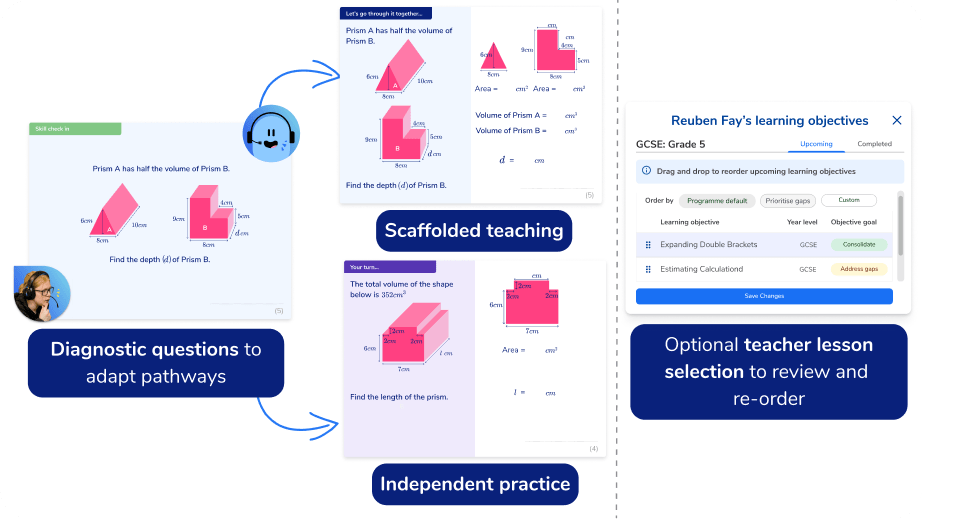
Personalised learning made easy at scale
Skye uses diagnostic questioning to adapt GCSE maths teaching, scaffolding support to help build knowledge and maths skills if students need or skipping straight to independent maths GCSE practice if they’re ready.
Teachers have the ability to re-order topics at any point to align with their own GCSE maths intervention, revision and teaching goals.
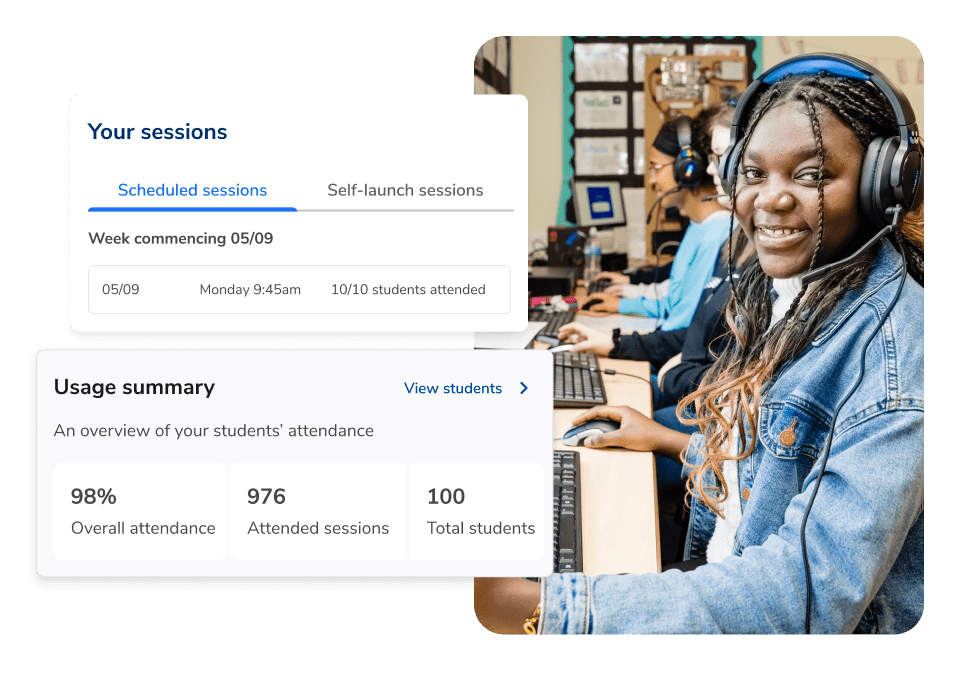
Flexible GCSE maths tutoring wherever you need it
Unlike a regular GCSE maths tutor, Skye is low-cost, fully flexible and always available, meaning you can use Skye for much more than regular, scheduled sessions throughout the year:
Extra maths GCSE practice with ad-hoc, on-demand sessions
More intensive GCSE maths revision in the run-up to exams
Cover to address staff absences or subject specialist shortages
Homework support
As a virtual Teaching Assistant
Keeping learners safe with Skye
Structured content: Skye can only display GCSE maths content created by our team; strict guardrails control interactions and ensure discussions are appropriate
Session recordings: All GCSE maths tutoring is recorded and transcribed and can be shared with the student’s school
Red flag policy: Skye automatically flags safeguarding concerns within the GCSE maths tuition for review and escalation
Trusted processes: Safeguarding policies previously approved by the Department for Education under the National Tutoring Programme
Structured content: Skye can only display GCSE maths content created by our team; strict guardrails control interactions and ensure discussions are appropriate
Session recordings: All GCSE maths tutoring is recorded and transcribed and can be shared with the student’s school
Red flag policy: Skye automatically flags safeguarding concerns within the GCSE maths tuition for review and escalation
Trusted processes: Safeguarding policies previously approved by the Department for Education under the National Tutoring Programme
Book a free maths tutoring taster for your school
Get in touch today to arrange a free GCSE taster session with AI maths tutor Skye. On a quick call, we’ll set everything up so you can see how unlimited maths tutoring can support your secondary school:
Trusted by more than 4,100 schools since 2013
Unlimited one-to-one tutoring for one low fixed cost
Developed by qualified secondary maths teachers for maximum academic impact
Built using insights from 2.1 million one to one tutoring sessions in schools
Designed to help students achieve their target GCSE maths grade
You can learn more about how we keep your data safe and secure in our privacy policy.
Want to discuss your pupils’ needs and see how Third Space
Learning can support your school?
Book a demo here.